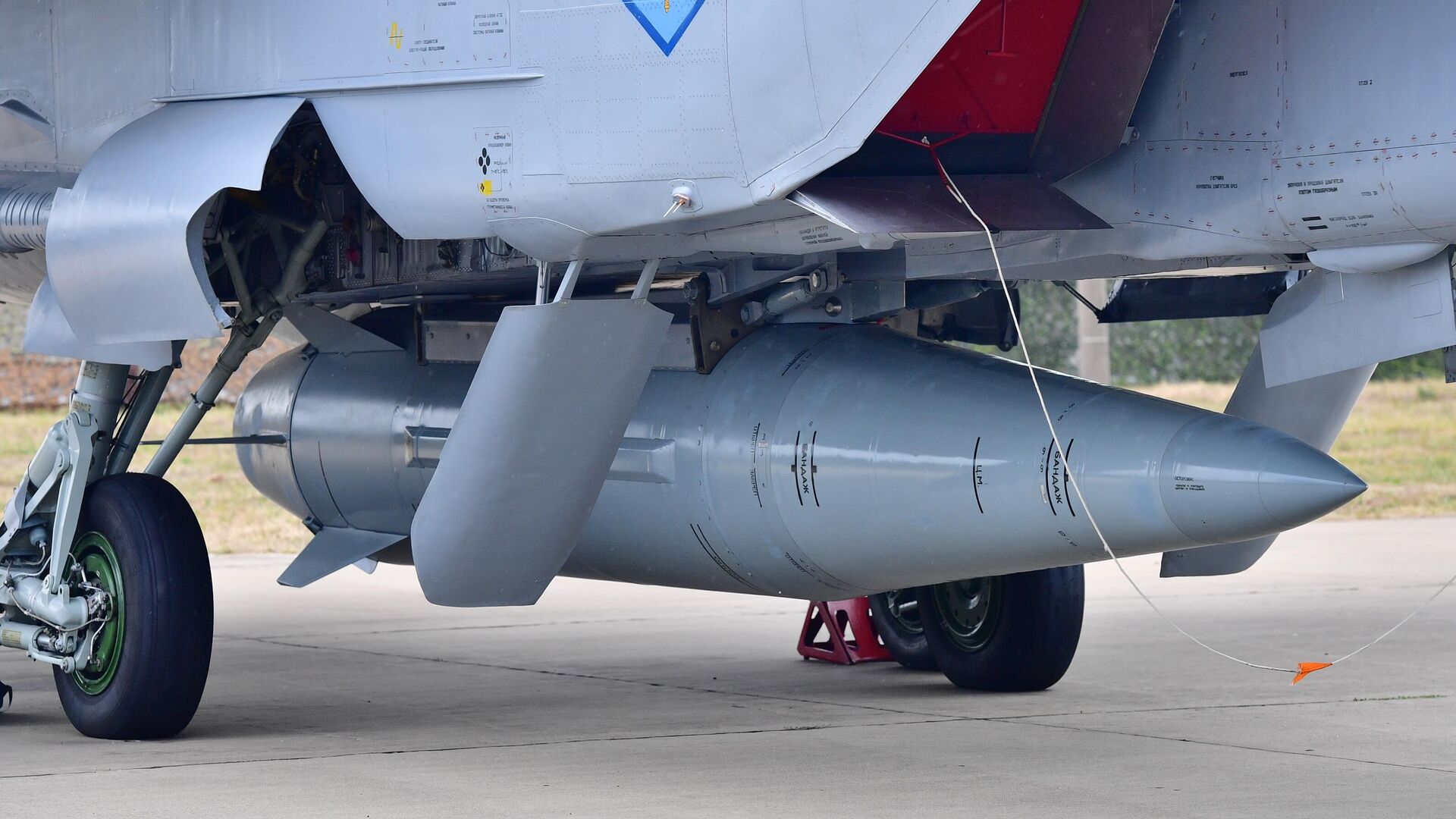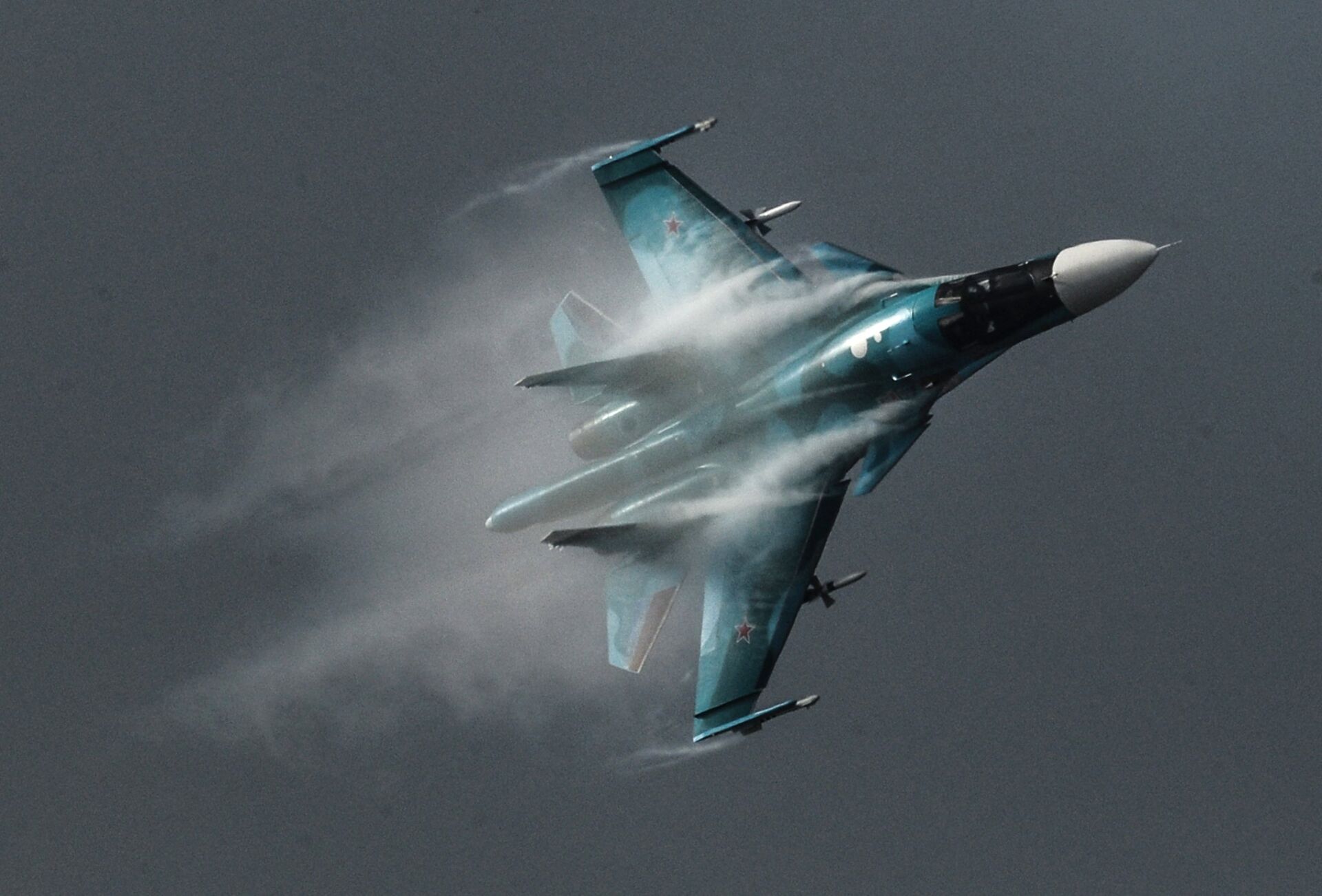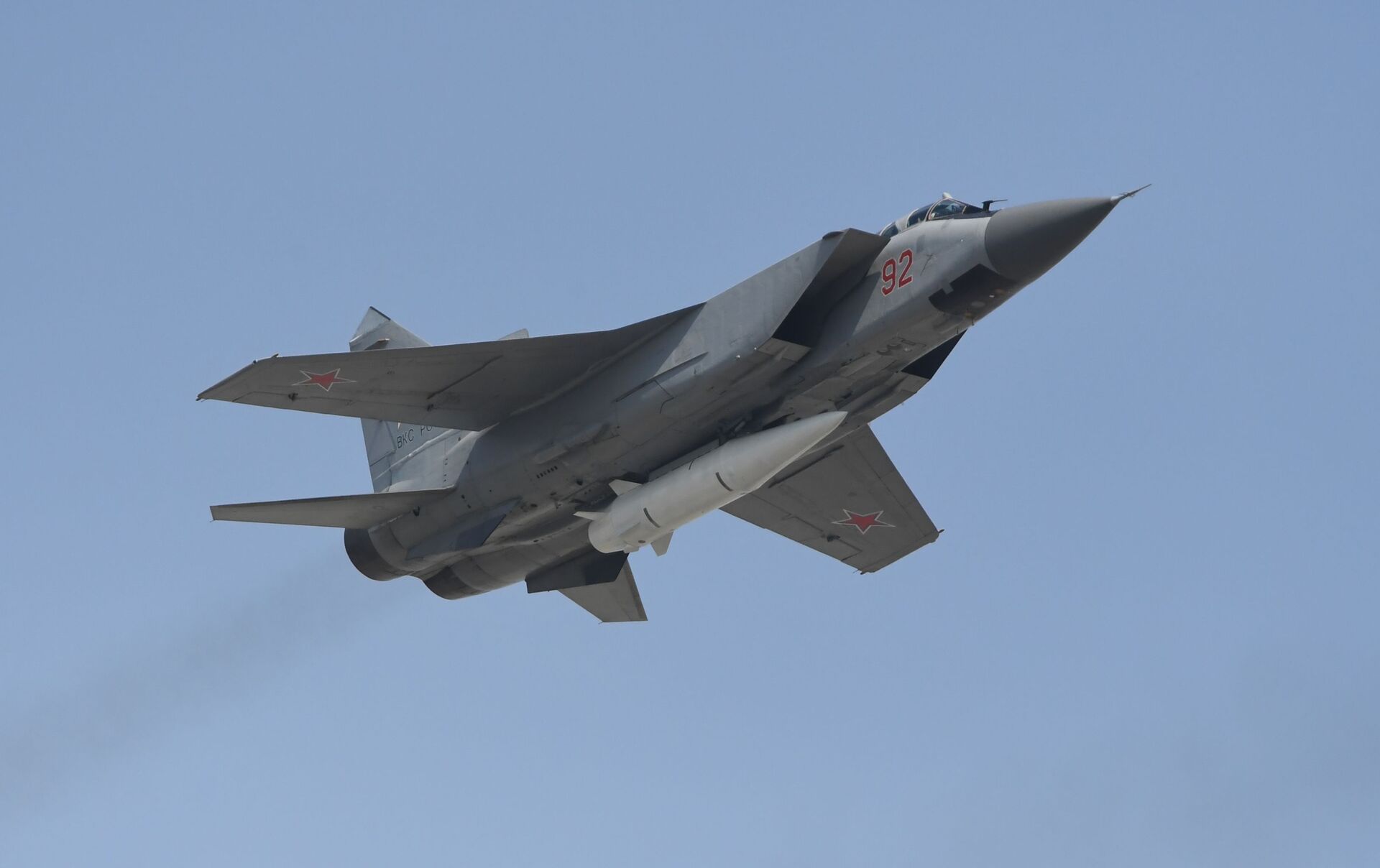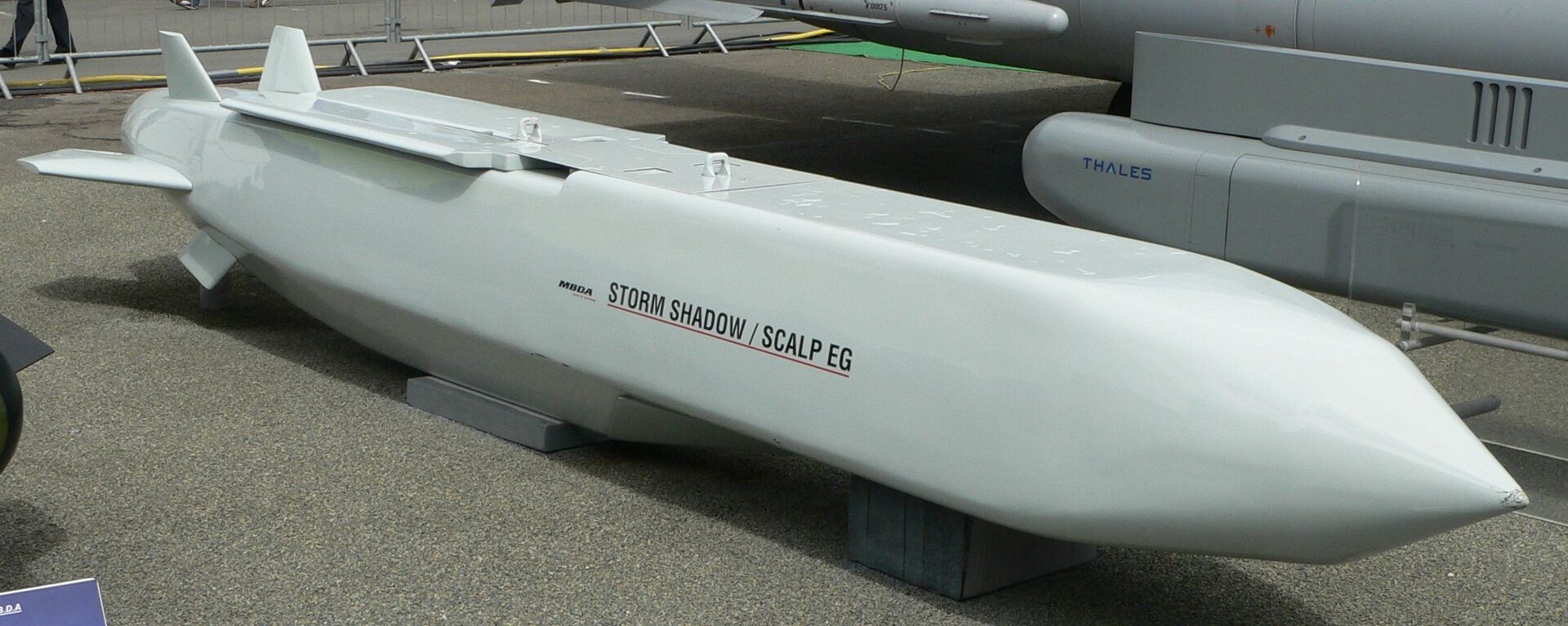https://sputniknews.in/20230905/hypersonic-nightmare-russian-kinzhal-missile-just-got-even-deadlier-4028161.html
Hypersonic Nightmare: Russian Kinzhal Missile Could Get Even Deadlier
Hypersonic Nightmare: Russian Kinzhal Missile Could Get Even Deadlier
Sputnik India
A source in the military told Russian media recently that the Su-34 multifunctional supersonic fighter-bomber used the Kinzhal hypersonic missile during a special operation in Ukraine.
2023-09-05T13:25+0530
2023-09-05T13:25+0530
2023-09-05T18:10+0530
kinzhal hypersonic missile
ukraine armed forces
ukraine
special military operation
sputnik opinion
russia
mod russia
belarus
sukhoi su-34
mig-31bm fighter jet
https://cdn1.img.sputniknews.in/img/07e7/05/0a/1894641_0:129:3185:1921_1920x0_80_0_0_aba81a60954170376d010eaf97fc272a.jpg
“The Su-34 aircraft used the Kinzhal hypersonic missile during the air strike. The first crew that successfully completed such a task was nominated for state awards.”The report, if true, is operationally significant, but perhaps not for the reasons that would immediately come to mind.The Su-34's ability to launch Kinzhal missiles doesn't mean Russian forces will now be able to launch many more Kinzhals at Ukraine. In the immediate context, the capability will not give Russia many more launch platforms, because before it can launch a Kinzhal, a Su-34 will have to undergo a deep upgrade, which will be time consuming.Existing Kinzhal Launch PlatformsGoing by past reports, Russia currently has 3 platforms capable of launching Kinzhal missiles:Most Kinzhal launches in the course of the Special Military Operation (SMO) have been associated with MiG-31K aircraft.However, it is not definitely known if any Kinzhal missile has been launched using Tu-22M3M during the course of the SMO.In February 2020, Russian media had reported, citing a source in the military-industrial complex (MIC), that work on integrating the Kinzhal missile with the Tu-160 supersonic bomber would be completed by 2020 end. Kinzhal armed Tu-160 would be integrated into the Army by 2021. However, as yet, there is no confirmation of the platform having been modified to carry and launch Kinzhal missiles.Su-34 UpgradeThe capability to launch a Kinzhal missile would have required deep modifications of the Su-34 airframe, its flight and weapon control systems.It's likely that Russia has developed an altogether new variant of the Su-34 to launch the 4,300 kg Kinzhal missile, as was the case with the MiG-31K.Launching the Kinzhal mandates more modification than mere strengthening of the fuselage. For example, the MiG-31K was internally modified and majorly re-equipped for carriage of the Kinzhal missile. The radar was removed to facilitate carriage of additional fuel and to increase endurance. The cabin of the crew was redesigned. The aircraft's navigation and weapon systems were upgraded for managing carriage and release of the Kinzhal. New communication equipment and datalink were installed to receive target coordinates.Elaborating on the deep modifications to the MiG-31 required for Kinzhal carriage and launch, Test pilot Hero of Russia Roman Taskaev told Izvestia.The launch platform of the Kinzhal missile essentially acts as the first stage of the ground Iskander-M missile on which the Kinzhal is based. The weapon control system allows the pilot to task the missile in real time using a specially developed target designation system.In order to ensure accuracy of launch, based on the entered launch parameters, the flight control system autonomously flies the aircraft and launches the missile. At the start of the launch sequence, the aircraft accelerates and gains altitude to achieve the right launch parameters.Su-34 vs MiG-31The Su-34 and MiG-31 are very similar in size, each weighing around 22,000 kg empty and around 46,000 kg when fully laden.The Su-34 engines, however, are less powerful than the MiG-31 engines.The 2 × Saturn AL-31FM1 afterburning turbofan engines on the Su-34 are each capable of producing 132 kN thrust with afterburner while the 2 × Soloviev D-30F6 afterburning turbofan engines are each capable of producing 152 kN with afterburner.In the past, the Russian press has reported that the much larger Tu-22M3M can launch a Kinzhal to a range of 3,000 km.The Reason Why Su-34's Kinzhal Launch Capability Is More DeadlyWhat should be clear by now is that building a Kinzhal launch platform - MiG-31K, Tu-22M3M or Su-34 - requires deep modifications that take time to implement and test. The qualification of the Su-34 as a Kinzhal launch platform will not add to Russia's Kinzhal punch immediately. However, it will make Russia's Kinzhal punch more destructive. Here is the reason why.Currently, Kinzhal missiles are mostly launched using MiG-31Ks stationed in Belarus. MiG-31K operating bases are under scrutiny 24x7 by elements sympathetic to Ukraine. As such, Ukraine gets alerted as soon as a MiG-31K armed with a Kinzhal missile gets airborne! In other words, despite Kinzhal being a hypersonic missile with a very short time of flight, Ukraine gets plenty of warning of a Kinzhal attack. Enough time for evacuation of personnel and relocation of some military assets.
https://sputniknews.in/20230902/how-western-missiles-have-fared-in-ukraine-3979449.html
ukraine
russia
belarus
Sputnik India
feedback.hindi@sputniknews.com
+74956456601
MIA „Rossiya Segodnya“
2023
News
en_IN
Sputnik India
feedback.hindi@sputniknews.com
+74956456601
MIA „Rossiya Segodnya“
Sputnik India
feedback.hindi@sputniknews.com
+74956456601
MIA „Rossiya Segodnya“
russian kinzhal missile, russia used kinzhal missile in ukraine, kinzhal missile, kh-47m2 kinzhal, kinzhal hypersonic missile, russian kinzhal missile, kinzhal missile upsc, kinzhal missile india, kinzhal missile vs brahmos, kinzhal missile weight, kinzhal missile cost, su 34, how many kinzhal missiles does russia have, how many kinzhal missile does russia have, su 34 supersonic fighter-bomber, special operation news, ukraine war news, ukraine kinzhal missile,
russian kinzhal missile, russia used kinzhal missile in ukraine, kinzhal missile, kh-47m2 kinzhal, kinzhal hypersonic missile, russian kinzhal missile, kinzhal missile upsc, kinzhal missile india, kinzhal missile vs brahmos, kinzhal missile weight, kinzhal missile cost, su 34, how many kinzhal missiles does russia have, how many kinzhal missile does russia have, su 34 supersonic fighter-bomber, special operation news, ukraine war news, ukraine kinzhal missile,
Hypersonic Nightmare: Russian Kinzhal Missile Could Get Even Deadlier
13:25 05.09.2023 (Updated: 18:10 05.09.2023) A source in the military told Russian media recently that the Su-34 multifunctional supersonic fighter-bomber used the Kinzhal hypersonic missile during the special military operation in Ukraine.
“The Su-34 aircraft used the Kinzhal hypersonic missile during the air strike. The first crew that successfully completed such a task was nominated for state awards.”
The report, if true, is operationally significant, but perhaps not for the reasons that would immediately come to mind.
The Su-34's ability to launch Kinzhal missiles doesn't mean Russian forces will now be able to launch many more Kinzhals at Ukraine. In the immediate context, the capability will not give Russia many more launch platforms, because before it can launch a Kinzhal, a Su-34 will have to undergo a deep upgrade, which will be time consuming.
Existing Kinzhal Launch Platforms
Going by past reports, Russia currently has 3 platforms capable of launching Kinzhal missiles:
Most Kinzhal launches in the course of the
Special Military Operation (SMO) have been associated with
MiG-31K aircraft.
A recent Russian MoD post on Telegram alluded to Kinzhal launch capability for the Tu-22M3M supersonic bomber; it states that the bomber is capable of launching hypersonic aeroballistic missiles. As far back as July 2018, Sputnik News had reported that the under development Tu-22M3M variant of the supersonic bomber would be able to carry 4 Kinzhal missiles.
However, it is not definitely known if any Kinzhal missile has been launched using Tu-22M3M during the course of the SMO.
In February 2020, Russian media had reported, citing a source in the military-industrial complex (MIC), that work on integrating the Kinzhal missile with the Tu-160 supersonic bomber would be completed by 2020 end. Kinzhal armed Tu-160 would be integrated into the Army by 2021. However, as yet, there is no confirmation of the platform having been modified to carry and launch Kinzhal missiles.
The capability to launch a Kinzhal missile would have required deep modifications of the Su-34 airframe, its flight and weapon control systems.
It's likely that Russia has developed an altogether new variant of the Su-34 to launch the 4,300 kg Kinzhal missile, as was the case with the MiG-31K.
The Su-34 has 12 hardpoints and can lift a total weapon load of around 12,000 kg. Its strongest hardpoint is on the fuselage and is capable of carrying a weapon weighing 1,500 kg, such as the FAB-1500 glide bomb. For carrying Kinzhal, at the very least, the fuselage of the Su-34 would need to be greatly strengthened, as is the case with IAF Su-30MKIs upgraded to launch the 2,800 kg Brahmos-A missile.
Launching the Kinzhal mandates more modification than mere strengthening of the fuselage. For example, the MiG-31K was internally modified and majorly re-equipped for carriage of the Kinzhal missile. The radar was removed to facilitate carriage of additional fuel and to increase endurance. The cabin of the crew was redesigned. The aircraft's navigation and weapon systems were upgraded for managing carriage and release of the Kinzhal. New communication equipment and datalink were installed to receive target coordinates.
Elaborating on the deep modifications to the MiG-31 required for Kinzhal carriage and launch, Test pilot Hero of Russia Roman Taskaev told Izvestia.
"A completely different weapon control system is required for the new missiles."
The launch platform of the Kinzhal missile essentially acts as the first stage of the ground Iskander-M missile on which the Kinzhal is based. The weapon control system allows the pilot to task the missile in real time using a specially developed target designation system.
In order to ensure accuracy of launch, based on the entered launch parameters, the flight control system autonomously flies the aircraft and launches the missile. At the start of the launch sequence, the aircraft accelerates and gains altitude to achieve the right launch parameters.
The Su-34 and MiG-31 are very similar in size, each weighing around 22,000 kg empty and around 46,000 kg when fully laden.
The Su-34 engines, however, are less powerful than the MiG-31 engines.
The 2 × Saturn AL-31FM1 afterburning turbofan engines on the Su-34 are each capable of producing 132 kN thrust with afterburner while the 2 × Soloviev D-30F6 afterburning turbofan engines are each capable of producing 152 kN with afterburner.
The MiG-31K is reportedly capable of launching the Kinzhal to a range of 2,000 km. Based on the comparative performance characteristics of the two aircraft, it can be safely concluded that the Su-34 will be able to launch the Kinzhal missile to a shorter range of around 1800 km.
In the past, the Russian press has reported that the much larger Tu-22M3M can launch a Kinzhal to a range of 3,000 km.
The Reason Why Su-34's Kinzhal Launch Capability Is More Deadly
What should be clear by now is that building a Kinzhal launch platform - MiG-31K, Tu-22M3M or Su-34 - requires deep modifications that take time to implement and test. The qualification of the Su-34 as a Kinzhal launch platform will not add to Russia's Kinzhal punch immediately.
However, it will make Russia's Kinzhal punch more destructive. Here is the reason why.
Currently, Kinzhal missiles are mostly launched using MiG-31Ks stationed in Belarus. MiG-31K operating bases are under scrutiny 24x7 by elements sympathetic to Ukraine. As such, Ukraine gets alerted as soon as a MiG-31K armed with a Kinzhal missile gets airborne!
In other words, despite Kinzhal being a hypersonic missile
with a very short time of flight, Ukraine gets plenty of warning of a Kinzhal attack. Enough time for evacuation of personnel and relocation of some military assets.
The ability of the Su-34 fighter bomber to launch Kinzhals will complicate and weaken Ukraine's ability to counter the threat from the Russian hypersonic missile. Ukraine will have no way of knowing which Su-34 is armed with Kinzhal, which not. It's likely that at any given time, more than one Su-34 is in the air. When and which will launch a Kinzhal would be hard to determine.




